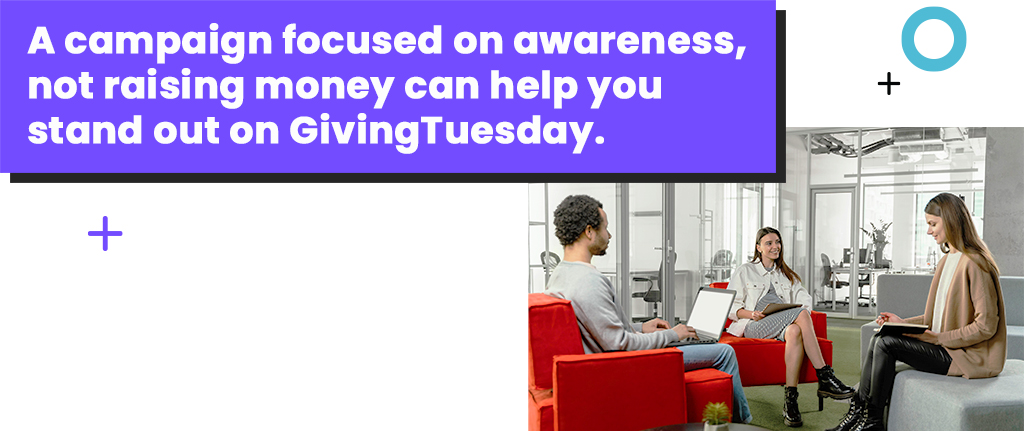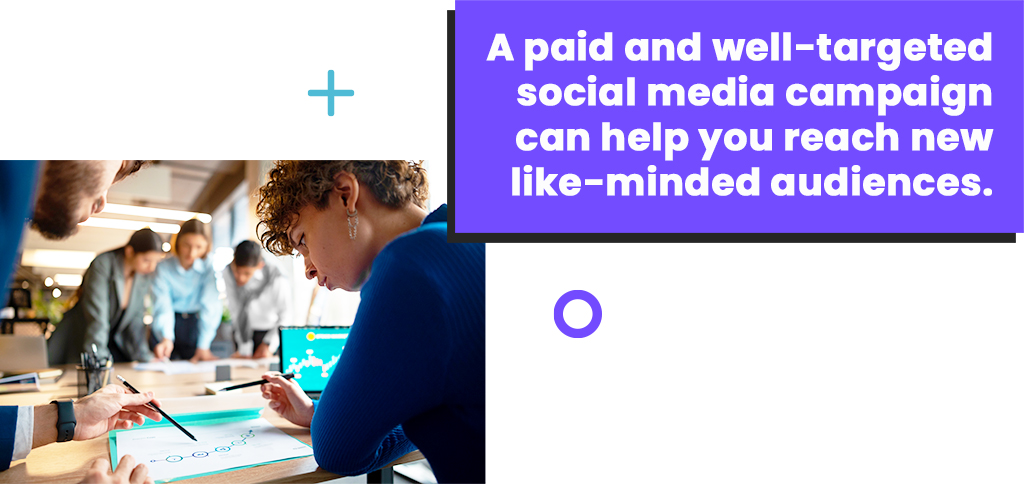As a fundraiser, you know it’s not always easy to rise above the noise. But being creative and finding a way comes with the territory when you work in nonprofit development. And an awareness campaign can be a great way to do it!
But these strategies require a unique approach, whether you’re planning a campaign around a particular day of awareness related to your mission, looking for ways to stand out on occasions like GivingTuesday, or wanting to grow your network of potential supporters.
Believe it or not, an awareness campaign is one of the most effective ways your nonprofit can vary your communications and stand out from the crowd. Here’s what you need to know before you get started!
What is your goal?
It’s important to start by identifying the end goal of your campaign so you can develop a strategic message that will tie all the elements of your outreach together. This is pretty straightforward for initiatives like a capital campaign, where your goal is to expand services by funding a new building or facility.
But awareness campaigns are a bit more ambiguous. The overarching goal of any awareness campaign is to provide greater visibility for your nonprofit and its mission.
But this is a lot like saying the purpose of a capital campaign is to “build a building.”
So, be more specific with your goals and use that to shape your message. Instead of “reach more people,” set a goal of “add X new potential donors to our mailing list” or “secure X new social media followers.”
This will help you craft communications with a clearer call-to-action, like “Follow us on Instagram so you can see the impact we make every day.”
READ MORE: How to come up with a compelling case for support.

Standing out on GivingTuesday.
GivingTuesday is coming up fast! The biggest day of giving worldwide falls on November 28 this year. And your supporters will probably receive a GivingTuesday email appeal from every nonprofit they’ve ever engaged with.
Take this opportunity to run an awareness campaign instead of asking for a GivingTuesday donation like every other nonprofit. This approach will help your communications cut through the clutter and allow your audience to learn more about why your mission is so important.
Taking the time to do something different and raise awareness for your cause may be enough to entice some donors to visit your website and make a gift on their own.
You can also track which recipients clicked on an awareness email and then pay special attention to them when you send your year-end appeal. You may even add a versioned line for those who clicked, saying, “We’re so glad you wanted to learn more about our mission. Now, we want to show you how you can make an impact.”
READ MORE: Getting a head start on your GivingTuesday campaign.

Choose the proper channels.
You know you need to go surround sound with your fundraising communications if you want to reach the right supporters, make an impression, and inspire them to engage with your organization.
But this doesn’t just apply to your appeal campaigns and other major fundraising initiatives. Using a multi-channel strategy for your awareness campaigns makes it more likely the right individuals will see and absorb your message.
For example, if your goal is to secure new followers on a specific social media site, that platform will be your primary channel. You may decide to run a social media ad campaign to reach more people! And then, you can follow up with an email to supporters already on your list to make sure they are following your social networks, too.
However, a campaign that aims to raise awareness and engagement among your current contacts would prioritize email as the primary channel with support from your social networks. And you can expand on those messages by following up with a direct mail piece.

It’s not always about the money.
What makes your nonprofit’s work possible?
If you answered “donations,” we hate to break it to you, but you need to think bigger. After all, those donations don’t materialize from thin air!
Inspiring individuals with similar goals and motivations as your nonprofit is a much better answer. Yet, too many nonprofits focus solely on securing support and neglect other important elements of their nonprofit’s outreach, like an awareness campaign!
After all, it’s unlikely someone will give the first time they hear from your nonprofit. You need to work to grow relationships with these individuals to secure long-term support. And the first step is making sure they know the problem you’re trying to solve and that your organization is working hard to make a difference.
Do you want to grow your networks and build the case for why your work is important? Then it’s time your nonprofit started planning an awareness campaign.
Need help getting started? Click here, and we can walk you through it!









